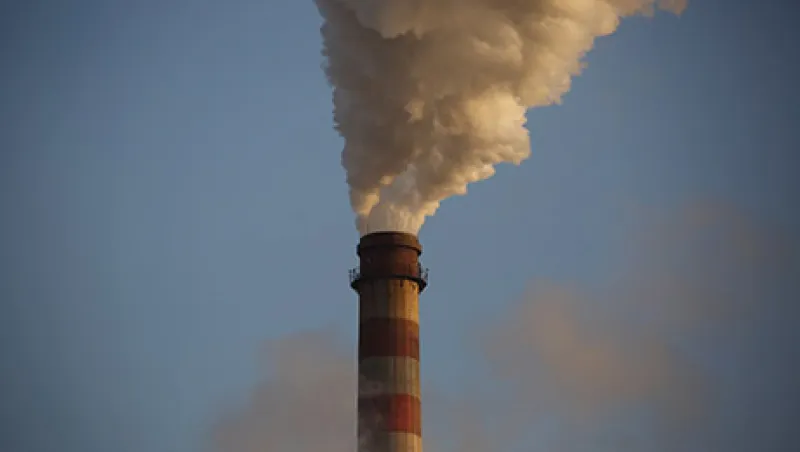So you have been asked to divest your fossil fuel holdings to take a stand against climate change. Even if falling demand for such stocks temporarily depresses prices, market logic suggests that amoral bargain hunters will snap them up and prices will revert to intrinsic valuations based on discounted cash flows.
Some have pointed out, however, that those cash flows are themselves at risk because the world will inevitably wake up to the perils of human-caused climate change and impose a price on carbon to slow consumption of fossil fuels, stranding reserves of “unburnable carbon.” In other words: Divest out of self-interest.
Divestment campaigns on other issues have sought to persuade the targets to change their behavior — for example, pressuring multinational companies to discontinue trading with and operating in apartheid South Africa.
By comparison, how can traditional energy companies respond to a divestment campaign, since they are inescapably in the business of producing and selling fossil fuels? Similarly, what can shareholders who reject the divestment path and prefer engagement, and even activism, ask fossil fuel companies to do? Activists have long urged corporate transparency in disclosing carbon-related risks, and the U.S. Securities and Exchange Commission has supported this with recent rulings.
But the typically unasked question is whether and how fossil fuel interests can be pressured in the near term to redirect much (and eventually all) of their investable cash flow from extractive activities like exploration and production to investments in clean energy.
Shareholder activists could promote this, but, as with the divestment campaign, they’d be up against market fundamentals because returns from clean energy are typically lower than those from fossil fuels.
That equation has improved in some ways — solar project returns, for example, have risen as the Chinese have driven down panel costs — and grown more adverse in others. BP exited solar in 2011 and wind in 2013, prompted by the reduction in renewable subsidies, competition from falling natural-gas prices and enticing investment opportunities in shale gas. That is, BP went from “Beyond Petroleum” to Back to Basics.
Like ExxonMobil, BP continues to invest in alternative fuels, but as an ancillary to its oil business and driven mostly by biofuel blending mandates. Chevron has dipped a big toe into efficiency services and geothermal, and other oil majors reportedly have active, secretive labs where they plot to win in a post-oil future.
But clean-energy investing has remained a sideshow to fossil fuel companies’ primary focus on replacing and growing reserves. That leaves them exposed to future de facto expropriation through prohibitive carbon pricing or draconian regulation once the world gains conviction that it cannot safely burn more than an estimated one-fifth of current reserves and stay under the climate change danger threshold.
Carbon pricing — whether imposed through cap-and-trade or a carbon tax — would increase the cost of consuming fossil fuels and, by design, make clean energy relatively more competitive. This would shift demand patterns over time; however, on its own, carbon pricing likely wouldn’t stimulate enough capital formation to scale up the supply of clean energy in the magnitude and time frame required to avoid the most dangerous effects of climate change.
But maybe there is a bargain to strike. What if fossil fuel interests are indeed pressured but also incentivized to begin a fundamental investment reallocation?The government could pay a substantial portion of the revenue generated by carbon pricing back to fossil fuel companies on the condition that they agree to allocate every dime of it to clean-energy investments and to commit a proportional ratio of internal cash flow to the same.
This free leverage from an infusion of government-supplied capital could boost risk-adjusted returns from portfolios of clean-energy investments to be comparable to those provided by E&P projects. In fact, the payment level could be set in pursuit of this return equivalence objective. It could also reduce companies’ portfolio volatility, since the risk profile of structured, long-duration clean-energy cash flows compares favorably to that of many E&P projects.
If such a deal were crafted in advance, it could reduce opposition by fossil fuel companies to imposition of the carbon price, which has been a root cause of political paralysis. It would transform them into truly diversified energy companies with a material stake in a future low-carbon economy, while leveraging their large-scale engineering, project management and financial and risk modeling competencies on behalf of a Manhattan Project–level scale-up of clean energy. Some of the skill sets are remarkably transferable: offshore oil rigs to offshore wind turbines, extracting subsurface oil and gas to tapping ubiquitous hard-rock geothermal energy currently constrained by drilling technology.
Most important, it would generate the long-missing mother lode of capital needed to rapidly scale up low-carbon alternatives, without which they are destined to remain (as many assume) a small fraction of the global energy portfolio in 2050. Enterprise and project investment opportunities are available across the risk-reward spectrum in solar, geothermal, wind, electricity storage, combined heat and power, transport electrification and transformational efficiency in buildings, industry and supply chains.
Rough figures from the back of an envelope: If all 33 billion tons of carbon dioxide emitted by fossil fuel combustion in 2013 were priced at a moderate $10 per ton (the auction floor price in California’s new cap-and-trade system), it would produce $330 billion in revenue. If governments paid $100 billion of that sum back to the fossil fuel companies, contingent on a 3-to-1 match from reallocation of E&P budgets (which totaled roughly $650 billion worldwide in 2013), that would come to $400 billion per year in clean-energy spending — making a real dent in the $5 trillion incremental spend on clean energy the International Energy Agency has called for by 2020.
Obstacles would abound to such a proposal. First, the market favors oil-and-gas pure plays, not energy conglomerates; and short-term asset growth (and stock appreciation) through drilling over long-tailed project cash flows. Institutional shareholders, though, weigh heavily in the market, and their vulnerability to the stranded-reserve problem should strengthen their resolve to push for change.
Second, moving the needle on fossil fuel company returns would seem to require massive project investments only. But over $1 trillion has been invested in clean energy over the past decade, and its absorption capacity is primed to surge.
Third, carbon pricing opponents fear any government revenue schemes. In this proposal, however, auction revenue would not be used to pick winners through government-administered clean-energy programs; rather, those funds would be returned to the private sector for sophisticated, profit-motivated investment (and the companies whose returns would be most hurt by carbon pricing would be made whole through a prudent incentive payment to diversify).
Finally, the biggest obstacle to a proposal like this is that taxing people and sending any of the proceeds to fossil fuel companies would be a heavy political lift; many favor using those revenues to fund a dividend back to the people. The prospect of the fossil fuel companies using their own cash to add 3-to-1 leverage to the government payments might soften that opposition.
Ultimately, it would come down to this realization: In return for the prosperity they have delivered to the modern economy, fossil fuel interests have grown too formidable to dislodge through Schumpeterian creative destruction or divestment; the world may not be able to transition urgently to a low-carbon economy without harnessing their cash flow, political power and large-scale execution capabilities.
Daniel Abbasi is managing director of GameChange Capital, a Stamford, Connecticut–based private equity firm seeking to finance an accelerated transition to a low-carbon economy.
See also “Yale and Harvard Are Losing the Fossil Fuel Divestment Game”






